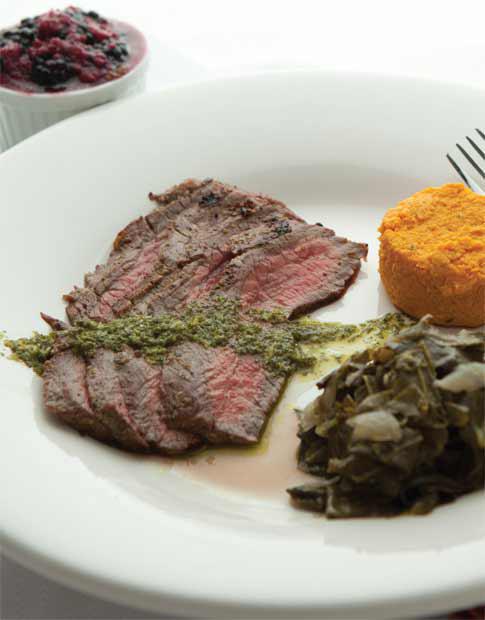It all started on a girls’ night in Los Angeles, where we were intentionally going to “bars and restaurants beginning with the letter L.” Lola’s, Luna Park, Lala’s. It was the latter establishment—an Argentinean restaurant on Melrose Ave.—where I first tasted chimichurri, and my life was then and forever changed. What does the word mean? Lots of rumors abound regarding its origins, but the one I particularly like had to do with some British prisoners in Argentina saying “che-mi-curry” (give me curry)—asking for a condiment to go with their food. This was then corrupted to chimichurri. No matter its origins, the condiment is simply amazing and full of fresh flavors. A favorite appetizer of mine is grilled steak skewers with the chimichurri, and it’s absolutely lovely served over some fresh grilled vegetables. It also makes a great marinade!
1½ cups (40 g) fresh flat-leaf parsley, trimmed of thick stems
3–4 garlic cloves
2 tablespoons fresh oregano leaves
1 teaspoon fresh thyme leaves
1 teaspoon smoked paprika
½ cup (125 mL) olive oil
2 tablespoons red or white wine vinegar
1 teaspoon sea salt
¼ teaspoon freshly ground black pepper
¼ teaspoon Tabasco or other hot sauce
- Place first five ingredients into a food processor and pulse until all herbs are finely chopped.
- Remove to a mixing bowl and stir in the oil, vinegar, salt, pepper and hot sauce.
- Serve immediately or refrigerate. If chilled, return to room temperature before serving.
Tips & Tricks—If you want to get really authentic and feel like spending a lot of time with your knife, go ahead and do all the chopping of the garlic and herbs by hand and combine with the other ingredients by hand.
Variations—Feel free to add in some cilantro, or mix in some peppers of your choice (hot or sweet), some tomatoes, etc., though most of the so-called “authentic” Argentinean recipes will be much like the one stated above.


